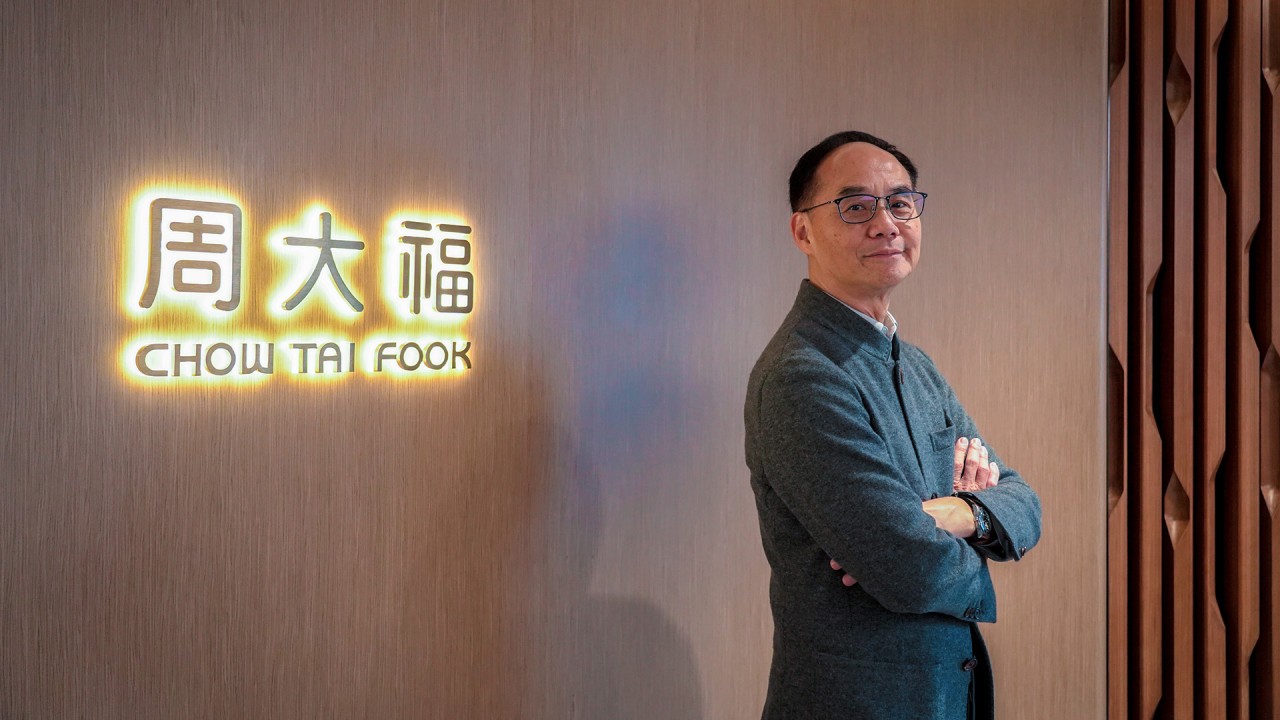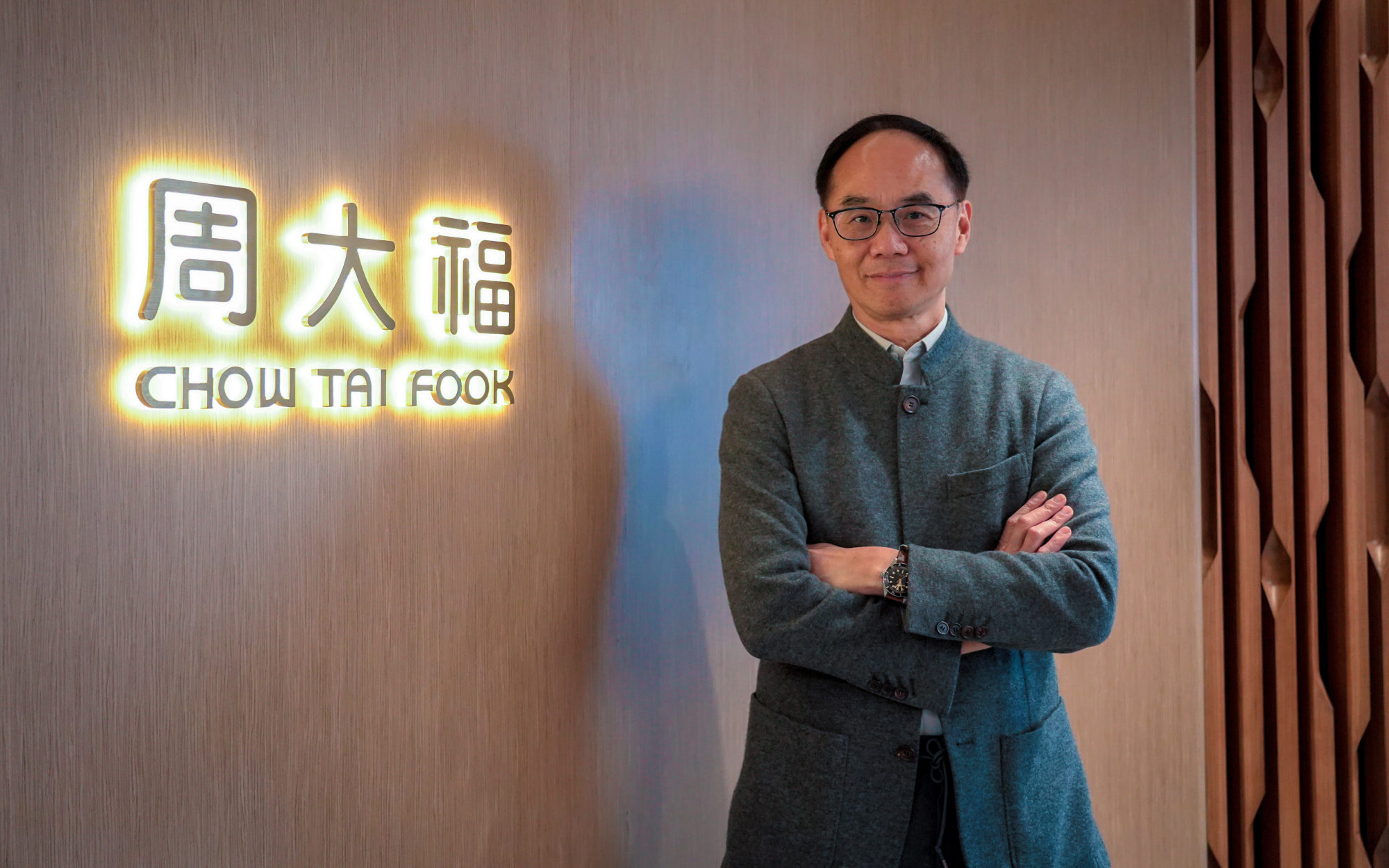
03:31
Hong Kong-based jeweller Chow Tai Fook on gold sales to young people in China, market forecast
China’s gold jewellery market shines as culturally resonant designs draw young buyers to safe-haven metal
- The guochao or ‘China chic’ trend, which celebrates Chinese identity, coupled with gold’s increasing value, is creating a market opportunity
- Young people are prioritising the purchasing experience, craftsmanship and the narratives behind jewellery, says Chow Tai Fook managing director
Hazel Wu, a 23-year-old student in Shanghai, recently bought a gold pendant to “seek an auspicious meaning” in the coming Year of the Dragon.
Many Chinese believe that they may face challenges during years that match the zodiac sign they were born under. So people born in the Year of the Dragon, like Wu, may believe they are at risk of financial setbacks or health issues. However, these can be warded off by wearing or carrying talismans.
But that is not the only reason Wu made the purchase. “I bought gold jewellery mainly for its value preservation, viewing it as a form of investment.” Wu said. “The designs are getting much fancier now, with collaborations featuring animated [characters] or ‘guochao’ elements. It’s changing the stereotyped impressions associated with gold accessories.”
The rise of the guochao or “China chic” trend, which celebrates Chinese identity, coupled with the increasing value of gold, has created significant market opportunities in the gold jewellery market in China, which was valued at 410 billion yuan (US$57 billion) in 2022, according to the Gems and Jewelry Trade Association of China. The market has grown about 12 per cent compared with the pre-pandemic level in 2019 and 66 per cent compared with 2012.

A report released by Chinese e-commerce giant JD.com last year showed that from 2019 to 2022, the variety of products with guochao elements more than tripled, and the number of consumers purchasing guochao-related goods grew more than 70 per cent, with transaction amounts increasing by 355 per cent.
“Young people are increasingly drawn to Chinese culture and actively seeking to experience different cultural aspects, owing to their growing confidence in Chinese culture,” said Chow Tai Fook’s managing director Kent Wong. “So gold jewellery, especially those with cultural innovations, are particularly popular among young consumers in recent years.”
In addition, gold jewellery has gained favour because consumers see the metal as a safe store of value amid an economic slowdown when both property and stocks are suffering, he said.
A recent survey of 5,000 Chinese consumers aged between 18 and 40 showed that more than 90 per cent prefer to buy jewellery with symbolic meaning related to Chinese culture. According to the survey, carried out by market research company Ipsos for Chow Tai Fook, around two thirds of respondents were interested in buying gold jewellery.
“Unlike traditional consumers who focus on gold purity and price, young people are increasingly prioritising the overall purchasing experience, along with the craftsmanship of the jewellery and the narratives behind it,” Wong said.

At a factory of the Chow Tai Fook Jewellery Group in China’s southern Guangdong province, artisans use ancient gold working techniques to craft jewellery infused with Chinese cultural themes ranging from Dunhuang murals to the Tang dynasty.
Heritage gold, made using ancient techniques, and hard pure gold were the top two sources of profit for retailers in 2023, driven by guochao and the sophisticated design of these products, according to another World Gold Council report published in October.
“Products featuring fashionable and creative designs bring the most profit,” said the report, based on input from more than 500 industry insiders. “The outperformance of both heritage and hard-pure gold jewellery in sales and profitability proves that product innovation is key to unlocking the potential for growth.”
The trend of integrating guochao elements should be sustainable as long as retailers avoid simply jumping on the bandwagon, said Jason Yu, managing director of market research firm Kantar Worldpanel in Greater China.
“Today’s youth aren’t just buying because a product features traditional Chinese figures like dragons,” he said. “They want to see innovative craftsmanship or concepts blending with guochao elements. Only through such differentiated and truly fashionable innovations can young consumers be attracted.”
China’s wealth-preservation society ups appetite for gold with record imports
Chow Tai Fook boosted its use of cultural themes in 2017. It began working with museums and universities to renew traditional gold-crafting techniques, combining them with modern aesthetics and Chinese cultural themes in its Hua collection.
“This collection gained immense popularity among young people, as they find it both aesthetically appealing and a way to connect with their roots,” Wong said.
China has overtaken India as the world’s top consumer of gold jewellery, with consumption rising 10 per cent year on year to 630 tonnes last year, compared with India’s 562.3 tonnes, according to a World Gold Council report last month.
Online sales now contribute nearly 5 per cent of Chow Tai Fook’s total revenue and more than 14 per cent of overall volume, according to Wong. During the last Singles’ Day, the company achieved year-on-year growth of nearly 90 per cent.
Chow Tai Fook’s sales over the last three months of 2023 grew 40 per cent year on year, driven by festive demand and a favourable comparison base, with gold jewellery and products contributing to over 80 per cent of the value, according to its most recent earnings report.
“In 2024, we expect the popularity of gold jewellery to continue growing steadily,” Wong said. “Gold will still serve a valuable purpose as a hedge against currency devaluation in the long run. And in terms of the design of gold jewellery, there are still numerous cultural themes and creative product ideas yet to be explored.”

